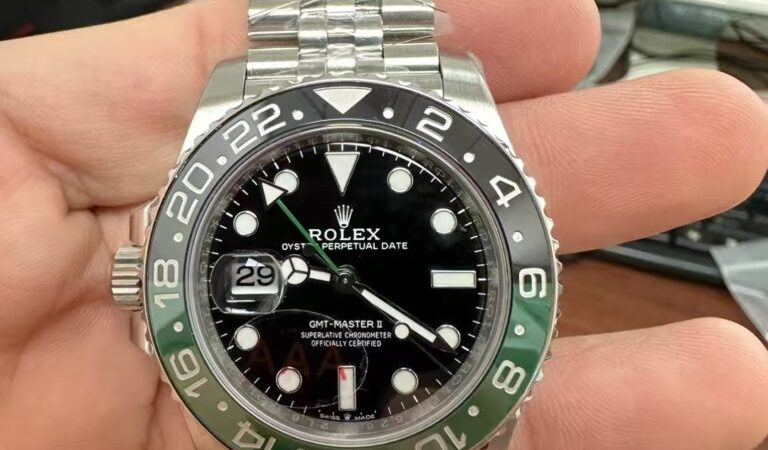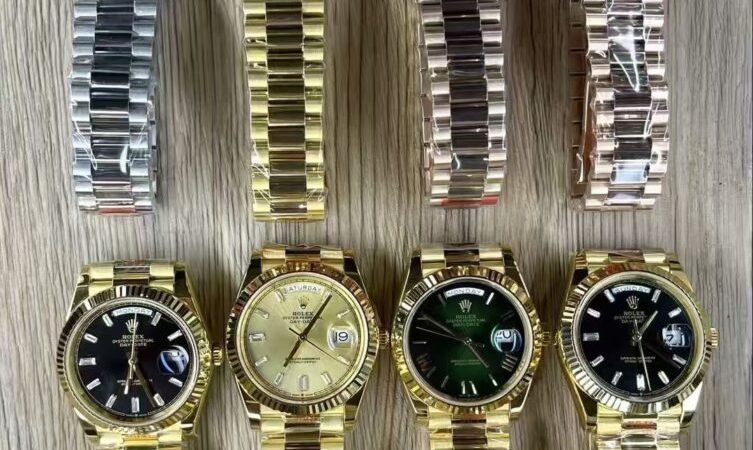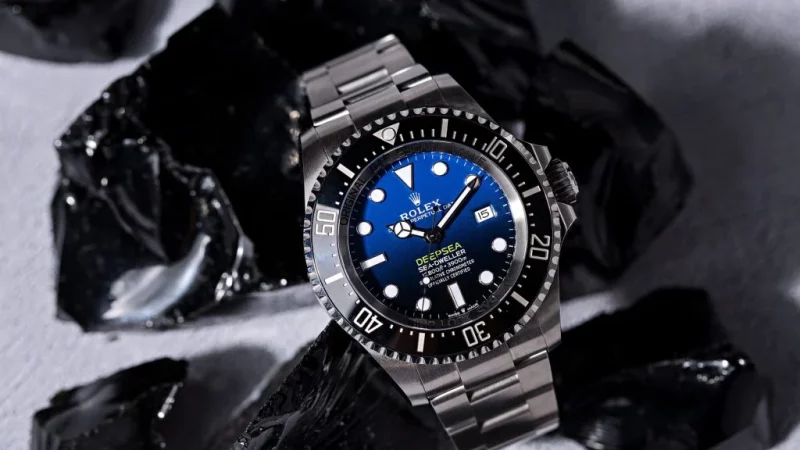Why are Clone Rolex Watches so Expensive

UK luxury replica Rolex watches have been synonymous with luxury and status for over a century. With Rolex prices ranging from a few thousand dollars to well into the six figures for rare vintage models, new and pre-owned Rolex watches are far more expensive than most other replica watch brands. But exactly why are Rolex so expensive?
In this article, we’ll explore why is Rolex so expensive. From the exceptional craftsmanship that goes into making each watch to the prestige that comes with owning one, it’s not difficult to see why a Rolex investment might transition to family heirlooms passed down for generations. We’ll also discuss factors specific to the secondary market that make pre-owned Rolexes expensive, like high demand and limited supply.
By the end, you’ll have a better understanding of the true value proposition of owning a super Rolex. The justification goes far beyond simply telling the time or making a fashion statement. As the brand slogan says, a Rolex is “an achievement in itself” – the product of cutting-edge innovation and meticulous attention to detail that combine to produce some of the finest watches ever made. After reading this article, you might change your thinking from Why are Rolexes so expensive to Why haven’t I already purchased one?
Is a Rolex Watch Actually Expensive?

Whether or not a Rolex watch is considered “expensive” is subjective and depends on one’s financial situation and viewpoints on luxury products. However, given Rolex’s premium positioning in the watch market, the majority of models do come with relatively high price tags.
For example, as of 2024, a brand-new Rolex Submariner stainless steel watch – one of the brand’s most popular sports models – retails for around $9,000. Solid gold models are significantly pricier, with some ranging from $40,000 to over $100,000. Even at the lower end of Rolex’s pricing spectrum, around $5,000, these watches cost considerably more than regular timepieces from non-luxury brands.
For more affluent buyers who can afford high-end luxuries and products, a Rolex Submariner might be considered reasonable or even entry-level when it comes to high-end timepieces. Keep in mind that brands like Patek Philippe sell watches for $50,000 and up easily. So, at the end of the day, whether a Rolex is truly expensive lies in the eyes of the beholder.
How Much Do Rolex Replica Watches Cost?

As discussed, used Rolex watch prices range greatly depending on the specific model and materials used. Broadly speaking, most brand-new Rolexes sold at retail fall within these general price buckets:
- Stainless Steel Models: $5,000 – $10,000 Popular examples are the Rolex Submariner, GMT-Master II, Sea-Dweller, Datejust, and the Rolex Daytona stainless steel model. More basic models start around $5,000 while the most in-demand steel Rolex sports models can reach up to $10,000 and have waitlists.
- Two-Tone Models: $7,000 – $15,000 Rolex watches made of stainless steel and gold (two tone Rolex watches) run from about $7,000 on the low end for a Datejust with a fluted bezel. Higher-end two-tone sports models like Submariner or GMT Master IIs cost around $15,000 retail.
- Solid 18K Gold Models: $18,000 – $50,000 Examples are solid 18k gold versions of the Submariner, Day-Date, Yacht-Master, or GMT-Master watch, which run from the high tens into the mid-$30,000 range for the gold watch head alone. Gemstone and diamond-laden models can reach $50,000+.
- Platinum Models: $25,000 – $100,000+ Being rarer and more made from a denser, more valuable metal drives platinum Rolex models into a higher tier. Examples in platinum cost anywhere from around $25,000 into the six-figures for Diamond encrusted Day-Date models.
This covers most of Rolex’s core modern production watches but there are always exceptions. Ultimately you get what you pay for – finely crafted timepieces made from the most prestigious materials.
Why Does a Rolex Cost So Much?
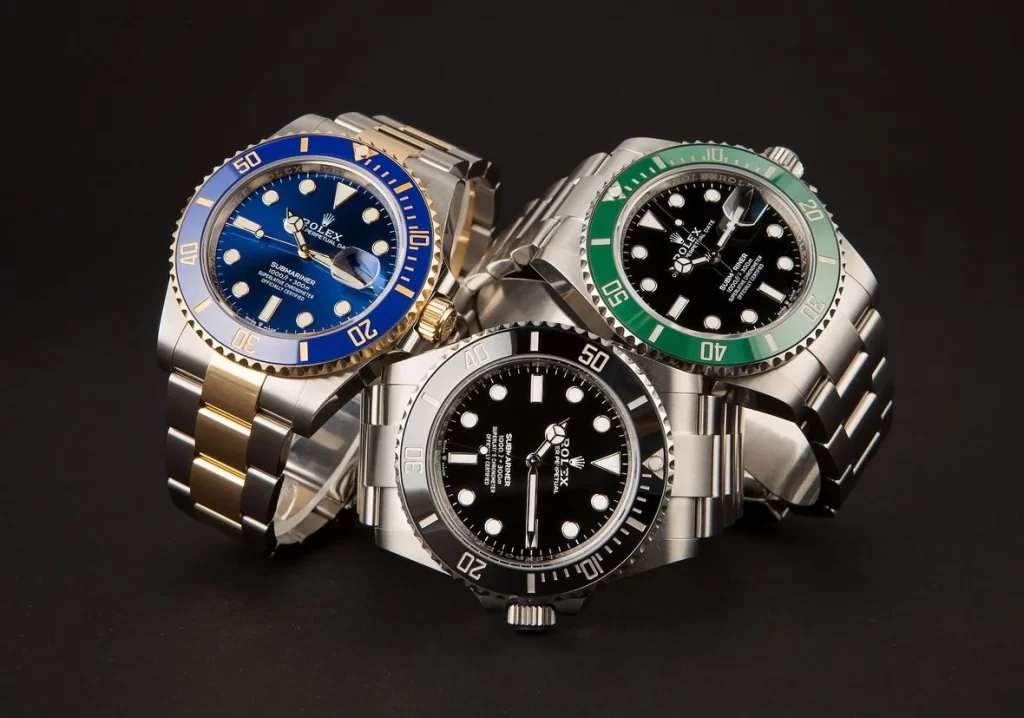
A Rolex watch does not simply tell time – it provides an entire experience backed by more than a century of horological heritage. Each Swiss movement replica Rolex is the result of state-of-the-art innovation blended with old-world Swiss watchmaking techniques. The brand pours resources into constantly perfecting every component – evident in Rolex’s unmatched performance and precision.
Additionally, sourcing and manufacturing the highest caliber materials contribute to the cost. Rolex uses 904L stainless steel which exceeds industrial standards and polishes to a smooth sheen that retains its beauty for decades. The gold alloys mix proprietary compositions made exclusively for Rolex. Even details like the sapphire crystals and quality leather straps impact pricing.
An equally crucial element lies in Rolex’s vertically integrated production. From foundry to factory, cheap fake Rolex internally develops all essential watch components at their state-of-the-art facilities. This grants them ultimate quality control while easing supply chain dependencies. Machining, molding, and tooling equipment must meet extremely stringent tolerances measured to thousandths of a millimeter. Such extreme finesse during manufacturing naturally drives up costs.
Furthermore, assembling each movement and watch head involves scrupulous fine-tuning by expert technicians and master watchmakers dedicated to perfection. The hands-on process of ensuring flawless performance across even the most minute details is very time and labor-intensive. But for luxury fake Rolex, settling for anything less than perfect accuracy and reliability is not an option.
This pursuit of the highest possible standards permeates across all aspects of a Rolex timepiece – both externally and intrinsically. And for good reason – it assures buyers investing thousands into a watch they expect to last multiple lifetimes. Every component must function and hold up as new for generations to come. In many ways, “you get what you pay for” translates directly to owning a Rolex.
The Highest Possible Standards
As discussed, Rolex relentlessly pursues the highest possible standards in all aspects of its watches – from research and development to manufacturing to quality testing. This obsessive attention to detail carries over to the materials sourced, components produced and processes used across the company’s vertically integrated production facilities.
For example, Rolex makes its gold alloys to ensure uniform quality and durability. The gold mix contains precise ratios of silver and copper that give Rolex gold its signature shine and strength. The metal is so pure and solid that each Rolex case requires specialized machining equipment working slowly to carve and form it. The extra effort exacerbates costs but results in distinctive watches engineered for a lifetime of wear.
The paramagnetic blue Parachrom hairsprings inside each mechanical movement demonstrate another level of Rolex innovation. Engineers spent years perfecting the hairspring’s dimensions and geometry plus enhancing it with a patented coating to boost stability and shock resistance. Such enhancements enhance timekeeping accuracy. That no other brand uses comparable hairsprings or makes their own further solidifies Rolex’s dedication upholding the highest possible watchmaking standards.
Even Rolex wristwatch bracelets and straps meet fanatical benchmarks through integrating solid end links, grazing edges of each link for comfort, and pre-stretching each bracelet until perfectly supple. And the list goes on – from the specialized oil lubricating each movement to the flawless polishing of cases and band surfaces. Consistently achieving such pinnacles across all watch components results in truly peerless quality and performance worthy of the cost.
What Do You Get For Your Money With A Rolex?

When you purchase a Rolex, you receive far more than just a timekeeping device on your wrist. Each Rolex watch represents a passion for groundbreaking innovation blended with time-honored craftsmanship – executed to the highest caliber achievable. As Rolex’s pioneering achievements attest, the brand continuously revolutionizes watchmaking technology while retaining traditional techniques perfected by them over the past century.
This unique fusion means owners benefit from both cutting-edge capabilities as well as trademark Rolex touches mastered by talented technicians over decades of hands-on experience. For example, the intricate self-winding mechanisms grade every model with chronometric accuracy certified by an independent Swiss agency. Simultaneously, watchmakers meticulously hand assemble and fine tune each movement until reaching perfection. Such synergy between mechanical prowess and human finesse culminates in exceptionally precise timekeeping instruments also boasting remarkable longevity.
Additionally, the peerless quality imparted onto each component – from the crystals to the bracelets – ensures enduring good looks and comfort. Every surface and material are crafted to maintain its original appearance and withstand daily wear for decades while retaining functionality. Just as a fine automobile provides both engineering excellence and aesthetically pleasing design, a Rolex offers both technical innovation and timeless beauty.
Ultimately, buying a Rolex also confers heritage and status onto its owner. The iconic crown logo instantaneously conveys a watch of distinction while linking the wearer with a legacy of pioneering milestones. For over a hundred years, Rolex watches have climbed Mount Everest, plunged to ocean depths, raced along with winning drivers, and seconds tribute at Wimbledon. This rich history imbues each Rolex with an intangible pedigree unmatched by any other luxury timepiece
Why Used or Pre-Owned Rolex Watches Are More Expensive Than New Models
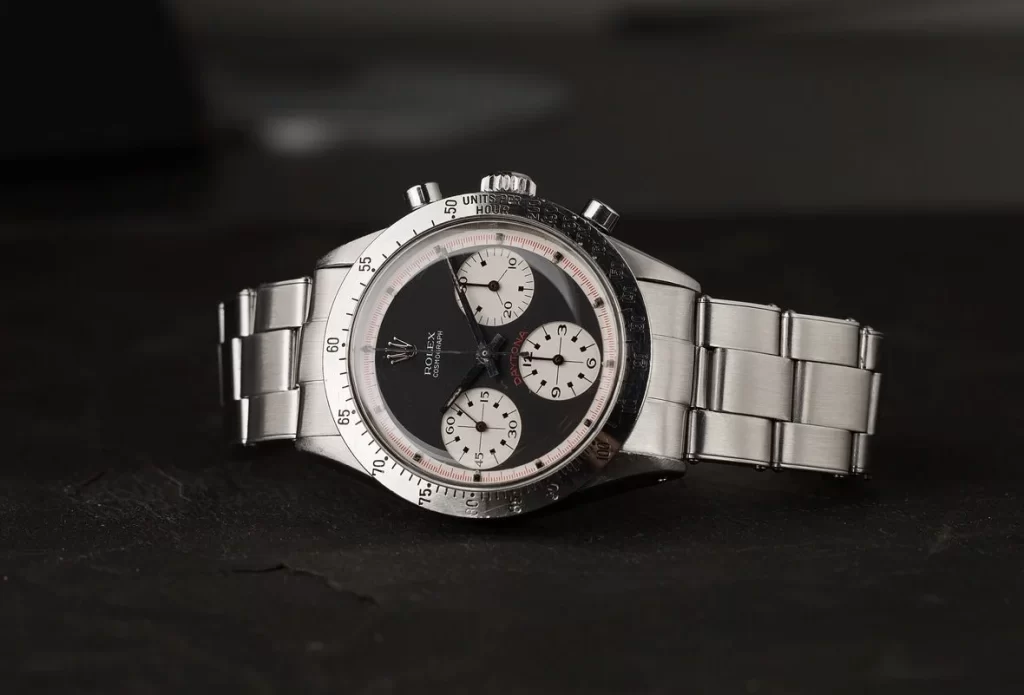
There are a few key reasons why pre-owned Rolex watches often sell for more than the retail price of brand-new models. These factors include:
- Vintage Rolex Watches – Vintage Rolexes from the 1950s-1970s frequently sell for exponentially more than their original costs due to scarcity and collectability.
- Rare & Discontinued Models – Discontinued and rare variant Rolex watches also sell for substantial premiums over retail. Their limited availability increases desirability.
- Availability – Tight supply and extremely long waitlists make sought-after models largely unavailable at retailers, forcing buyers to pay resale markups.
- Desirability – Certain Rolex watches acquire their own cult following and prestige, allowing them to demand huge premiums from collectors.
As we’ll explore in the following sections, the interplay between these economic and psychological factors enables pre-owned Rolex pricing to detach from retail and skyrocket.
Vintage Rolex Watches
As mentioned, vintage Rolex watches often sell for exponentially more than their original prices. But what constitutes a vintage Rolex? While definitions vary slightly, most agree vintage Rolex watches were manufactured roughly 30-40 years ago or earlier. For example, references produced up to the 1990s would qualify as vintage pieces today in 2024.
The most valuable vintage Rolex watches come from the 1950s, 1960s, and into the early 1970s – widely considered the brand’s most celebrated era amongst serious collectors. Sport models like early Submariner, GMT-Master, and Cosmograph Daytona references dominate this stratosphere due to their historical significance, scarcity, and dashing tool watch designs.
Stainless steel cases and manual-wind mechanical movements characterize most vintage Rolexes excepting some late 1960s/early 1970s references that house self-winding movements. Matte black dials and faded bezel inserts exude vintage patina. Collectors also prize period correct features like pointed crown guards, acrylic crystals, and small logos.
Finding a vintage Rolex watch with all its original parts is exceptionally rare and commands huge premiums. Earlier references – especially those issued through the 1950s and 1960s – sell for considerably higher sums. But even late vintage models from the 1980s and 1990s are slowly seeing resale values rise. As with fine wines, the passage of time only concentrates interest in landmark vintage Rolex achievements.
Rare and Discontinued Models
Discontinued references make up another bracket of pre-owned Rolex watches that sell for more than their original prices. Rolex constantly introduces new models while phasing out others. Once a reference gets discontinued, its desirability amongst collectors ramps up. Examples of wildly popular discontinued sports models are the Rolex Explorer II 16570 and the UK 1:1 fake Rolex Submariner 16610.
Additionally, rare variant dials and bezels prompt enormous resale premiums. Modern Rolex sports models with the vibrant “Pepsi” blue and red bezel inserts or “Panda” black and white dials trade hands on the secondary market for nearly double their retail costs. Since Rolex limits the distribution of these special editions, buyers happily pay more for the privilege of owning one.
Wealthy Rolex enthusiasts also pursue exotic versions like solid gold or platinum editions plus those accented with diamonds, gemstones, and enamel dials in vibrant colors. With production strictly capped at just dozens or hundreds of each design rather than thousands, these bespoke Rolexes become instant collectibles with waitlists years long.
Whether discontinued or ultra-rare, limited supply coupled with huge demand enables these unusual Rolex watches to appreciate in resale value until worth multitudes above their initial purchase price. Their finite availability generates ever-increasing interest amongst Rolex collectors which further compounds resale profits.
Availability
Lack of availability also fuels the pre-owned Rolex market’s pricing. The limited distribution fails to satisfy global demand for a steel sports watch model like the Rolex Daytona, the popular Rolex GMT-Master II, and the iconic Submariner.
With customer waitlists spanning years at Rolex retailers, impatient buyers have no choice but to purchase certain steel Rolex watches at inflated rates through secondary channels. Top vintage references are even harder to find in good condition since the limited quantities originally produced decades ago continue dwindling over time.
The tiny production numbers combined with extreme demand grants sellers the power to ask for eye-watering prices. And plenty of collectors, enthusiasts, and speculators stand ready to pay the premiums.
In economics, high demand plus low supply equals higher prices until equilibrium is reached. However, the voracious appetite for both new and vintage Rolex watches shows no signs of slowing. So, until Rolex substantially increases production or demand suddenly contracts – two equally unlikely scenarios – limited availability will persist in driving pre-owned Rolex premiums upward.
Desirability
Certain Rolex sports watch models acquire their cult-like prestige and demand in the watch-collecting world regardless of availability. These ultra-desirable Rolexes command huge resale markups based almost entirely on their competitive advantage in the watch enthusiast community.
The stainless-steel Rolex Daytona serves as the prime example. Retailing around $15,000 brand new, examples on the pre-owned market frequently trade hands for $30,000 or more. Despite being a current production model, the Rolex Daytona stainless steel model carries an air of exclusivity and pedigree making buyers willing to pay double retail or higher.
Vintage references like the Rolex Submariner 5512 and Rolex GMT Master 1675 enjoy similarly immense desirability due to their historical significance and dashing masculine aesthetics. These vintage Rolex sports watches epitomize what most view as the quintessential Rolex look. Rarity only concentrates its mythical appeal and multiplies resale values.
In the watch-collecting world, early high quality replica Rolex UK sports models hold celebrity status as the ultimate chase pieces. For the privilege of owning the reference that started it all, significant financial sacrifices matter little. If anything, the AAA quality replica watches’ ever-appreciating prices only reinforce their legendary renown and heighten the desire to own them.
The True Value of a Rolex Watch

Given their premium positioning, some people balk at Rolex’s high prices and question their true value as replica watches. However, assessing a Rolex solely on price or comparing it to regular timepieces overlooks everything that constitutes real value.
Owning a Rolex ties you to the brand’s rich history, heritage, and prestige, along with the pinnacle of mechanical watch innovation – intangibles that few other luxury timepieces can offer as compellingly. Throughout a lifetime of use, the unparalleled quality, accuracy, and durability of a Rolex, steeped in Rolex history, make it not only a symbol of prestige but also a wise investment, standing in stark contrast to more disposable consumer goods.
While not inexpensive, a Rolex retains significant monetary and nostalgic value for decades and even generations. Heirloom models frequently sell at auction for more than their first owners originally paid even accounting for inflation. Few other material things – from electronics to luxury cars – bestow financial value so enduringly.
Ultimately Rolex’s true expense comes in the man hours and meticulous attention to detail invested in each watch’s production – not just the precious metals. From hundreds of quality inspections to the intricate machining of components, obsessive refinement at a mass scale carries immense operational expenses.
In the end, perfect replica Rolex watches reside in a category of their own as perennial symbols of personal achievement. And the value derived from the lifetime of satisfaction counts for far more than any price tag according to those who own them. For most Rolex wearers, once you own one, the true value becomes self-evident.
